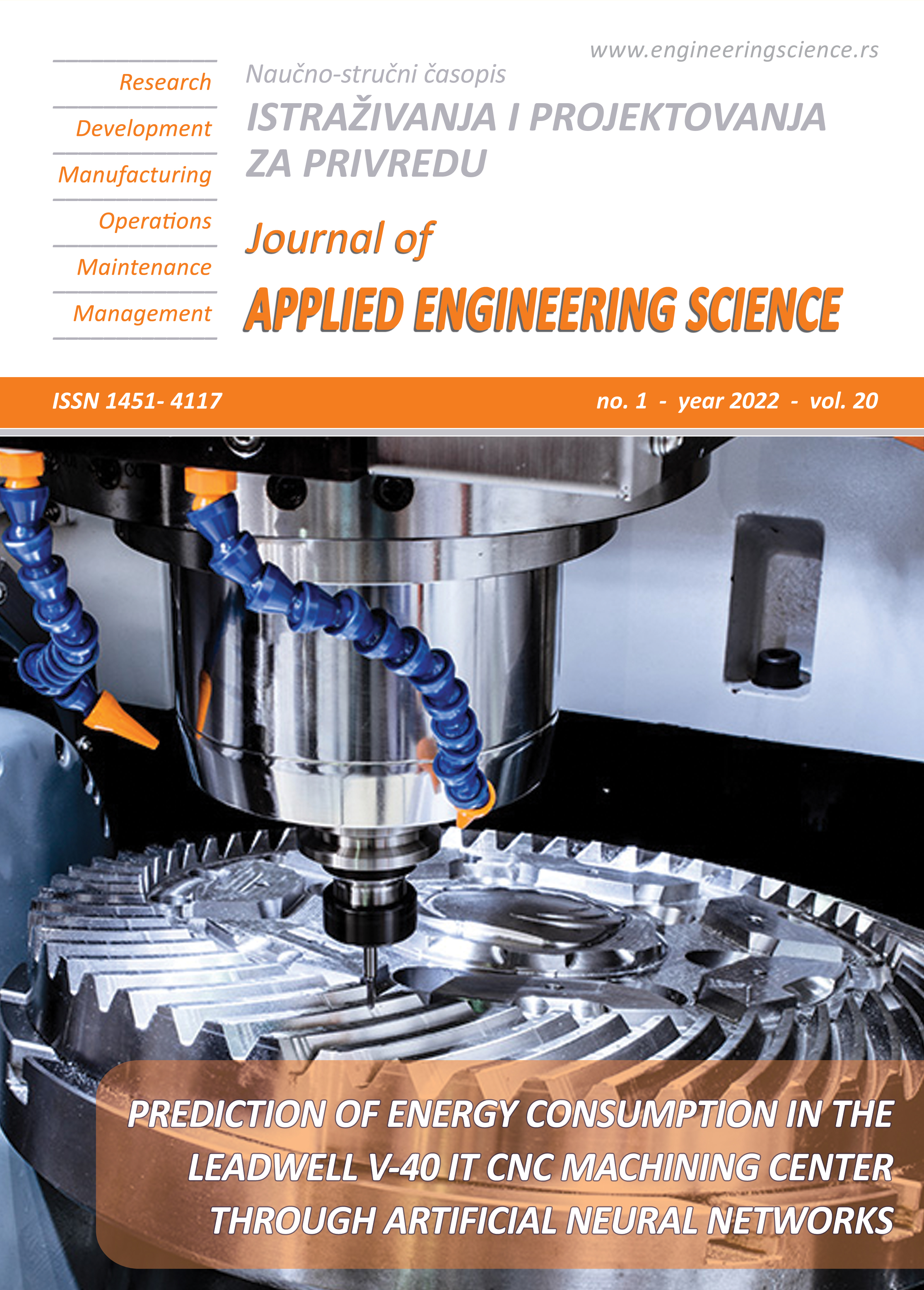OPTIMAL ENGINE MAPPING PERFORMANCES FOR DUAL SPARK-PLUG IGNITION INTERNAL COMBUSTION ENGINE USING NEURAL NETWORK
Abstract
Many variables affect the performance and fuel consumption of internal combustion engines. The most influential main variables include air, fuel, ignition, and compression. Spark plugs that play role in the ignition of fire have limitations in the propagation of fire due to their position because of the dual ignition technology. This study aimed to develop engine maps for dual ignition internal combustion engine using the Artificial Neural Network to predict the fuel consumption, generated torque, and find out the right combination of fire ignition on dual ignition systems to improve performance and reduce fuel consumption. The research was conducted with the initial step of retrieving the data engine map by using an engine scanner to find out the data on the current ECU. Then the data is modified to create a new engine map (modified engine mapping) that combines ignition timing 2 with a range of 0.5o - 2o. The test results show different torque and fuel consumption values in four modified engine maps. The optimum engine mapping is obtained on engine map 3 with an error value (Mean Square Error) of 0.002 and a regression value (R2) of 0.99. Modification map engine 3 with a combination of ignition timing 2 of 1.5o on ignition timing 1 shows the highest torque result with an increase in torque of 14.1% and a decrease in fuel consumption of 17.5%.
References
Ryan, F, B.,(2010), Utilization of a Neural Network to Improve Fuel Maps of an Air-Cooled Internal Combustion Engine, Master Thesis, The Russ College of Engineering and Technology of Ohio University: Ohio.
Zambre, D., Shintre, G., Patil, B.,(2014), Digital Twin Spark Ignition Using Mechatronics, IOSR Journal of Mechanical and Civil Engineering, 73-78.
Khair, M., Ishak A, (2010), The Effect of The Ignition Dwell Time at Constant Speed for CNGDI Engine, Australian Journal of Basic and Applied Sciences, vol. 4 no. 10, 4691-5694
Nanlohy, H, Y.,(2012), "Perbandingan Variasi Derajat Pengapian Terhadap Efisiensi Termal dan Konsumsi Bahan Bakar Otto Engine BE50", Dinamika Jurnal Ilmiah Teknik Mesin, vol. 3. no 2., 211-215.
Han, W. Q., & Yao, C. D., (2015). Research on high cetane and high-octane number fuels and the mechanism for their common oxidation and auto-ignition. Fuel, vol. 150, 29-40. DOI: 10.1016/j.fuel.2015.01.090
Bilgin, At,Altin, I, Sezer, I., (2009). Investigation of the Effect of Dual Ignition on the Exhaust Emissions of an SI Engine Operating on Different Conditions by Using Quasi-dimensional Thermodynamic Cycle Model, Strojarstvo,vol. 51, no. 5, 459-464.
Nirala, D., Hathile, A., Raj, J., Sen, P. K., & Bohidar, S. K. (2014), Twin‟ s Spark Plug Performance Study on Single Cylinder SI Engine with Gasoline Fuel a Technical Review. International Journal of Research, vol. 1, no. 1, 77 – 801.
Garg, A. B., Diwan, P., & Saxena, M., (2012). Artificial neural networks-based methodologies for optimization of engine operations. International Journal of Scientific & Engineering Research, vol 3, no. 5, 1-5.
Paridawati, Sinaga, N.,(2014). Optimasi Efisiensi Motor Bakar Sistem Injeksi Menggunakan Metode Simulasi Artificial Neural Network. Prosiding SNATIF, 161-164.
Müller, R., Hemberger, H. H., & Baier, K. (1997). Engine control using neural networks: a new method in engine management systems. Meccanica, vol. 32, no. 5, DOI: 423-430. 10.1023/A:1004203832719
Carbot-Rojas, D. A., Escobar-Jiménez, R. F., Gómez-Aguilar, J. F., García-Morales, J., & Téllez-Anguiano, A. C. (2020). Modelling and control of the spark timing of an internal combustion engine based on an ANN. Combustion Theory and Modelling, vol. 24, no. 3, 510-529. DOI: 1080/13647830.2019.1704888
Kekez, M., Radziszewski, L., & Sapietova, A. (2017). Application of artificial intelligence methods to modeling of injector needle movement in diesel engine. Procedia Engineering, 177, 303-306. DOI: 10.1016/j.proeng.2017.02.229
Serikov, S. A. (2010). Neural network model of internal combustion engine. Cybernetics and Systems Analysis, vol. 46, no. 6, 998-1007. DOI: 10.1007/s10559-010-9281-3
Kannan, G. R., Balasubramanian, K. R., & Anand, R. (2013). Artificial neural network approach to study the effect of injection pressure and timing on diesel engine performance fueled with biodiesel. International Journal of Automotive Technology, vol 14, no. 4, 507-519. DOI:10.1007/s12239-013-0055-6
Cay, Y. (2013). Prediction of a gasoline engine performance with artificial neural network. Fuel, vol. 111, 324-331. DOI: 10.1016/j.fuel.2012.12.040
Çay, Y., Korkmaz, I., Çiçek, A., & Kara, F. (2013). Prediction of engine performance and exhaust emissions for gasoline and methanol using artificial neural network. Energy, vol. 50, 177-186. DOI: 10.1016/j.energy.2012.10.052
Liu, Z., Zuo, Q., Wu, G., & Li, Y. (2018). An artificial neural network developed for predicting of performance and emissions of a spark ignition engine fueled with butanol–gasoline blends. Advances in Mechanical Engineering, 10(1), 1687814017748438.
Mansor, W. N. W., Abdullah, S., Razali, N. A., Albani, A., Ramli, A., & Olsen, D. (2019, November). Prediction of emissions of a dual fuel engine with Artificial Neural Network (ANN). In IOP Conference Series: Earth and Environmental Science (Vol. 373, No. 1, p. 012007). IOP Publishing. DOI: 10.1088/1755-1315/373/1/012007
Turnbull, S., (2008), Safe Tuning Guide for Buell’s using ECM Spy. Software Manual Guide.

